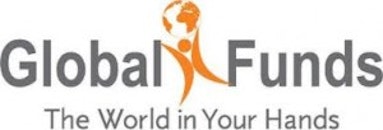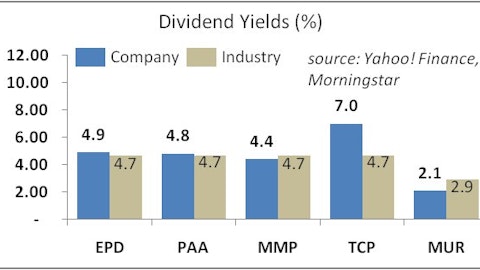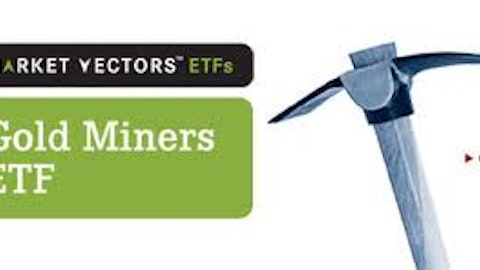
Canada has the seventh-largest economy in the world and is the second-largest country by land mass. It has a wealth of natural resources, making it a large energy and minerals exporter. For commodity traders looking to invest primarily in North America, Canada presents a compelling opportunity.
Canada’s Top Commodity Exports
At $94.8 billion (all figures are quote in Canadian dollars), energy products are the largest of Canada’s exports. Although Canada increased energy product exports to China by almost half from 2008 to 2010, the United States remains Canada’s principal energy destination, importing nearly 12 times more than China.
- Crude Oil: Crude oil is Canada’s largest commodity export. Valued at $87 billion per year, Canada’s oil industry produces 2.1 billion barrels of crude each day making it the sixth-largestcrude oil producer on the planet. The United States is the top importer of Canadian oil followed by Russia and the United Kingdom.
- Natural Gas: Natural gas accounted for $16.7 billion in total exports in 2011. The country’s 700 active production facilities brought approximately 7 million cubic meters to the world’s markets making it the sixth-largest natural gas producer in the world [see also 25 Ways To Invest In Natural Gas].
- Coal: Canada has 23 mines producing 68 million tons each year. In 2010, Canada exported nearly 33 million tons—almost a quarter more than in 2009. Asia is Canada’s largest coal trading partner accounting for nearly three quarters of total exports.
- Gold: Although none of the world’s 10 largest gold mines are located in Canada, gold is Canada’s second largest export and home to almost three-quarters of the world’s mining companies, making it the fourth-largest gold mining country in the world. Most Canadian gold comes from underground and open-pit mines in Quebec and Ontario.
- Maple Syrup: Our neighbors to the north are also the world’s largest producers of maple syrup, providing more than three-quarters of the global supply. Primarily centered in Quebec, this $6.3 billion industry is comprised of more than 32,000 agricultural businesses. The overall size of the market does not make this a large-scale export but the near-monopoly Canada holds is notable.
Canada’s Top Commodity Imports
The United States actually provides more than half of all Canadian commodity imports. Canada is the twelfth-largest commodity importer in the world.
- Crude Oil: Canadians import approximately 295 million barrels per year for a net expense of $12.2 billion. Imports take place primarily in the winter months when heating energy needs increase and, to a slightly lesser extent, during summer months during peak driving months [see also Crude Oil Guide: Brent Vs. WTI, What’s The Difference?].
- Natural Gas: Canada imports nearly 700 billion cubic feet of natural gas at a cost of $3.6 billion. As natural gas prices have fallen, Canada has imported more natural gas but spent less on it. The majority of Canada’s natural gas imports come from the United States.
- Electricity: Canada and the United States share an integrated electrical grid serving as importers and exporters to each other in order to meet nearly all of each other’s electrical energy needs. This not only provides for the energy needs of each country but also serves as a key element of national security.
- Food Products: The country imports more than $35 billion in agri-food imports each year. Canola and non-durum wheat top the list for a combined $8 billion. Soybeans, pork, bread, coffee, and frozen snow crabs are among the many other food items imported from the United States and other countries [see also 50 Ways To Invest In Agriculture].
Ways to Play the Market
Below, we outline several ways to make a play on Canada’s massive commodity industry.
- Claymore/SWM Canadian Energy Income (NYSEARCA:ENY): ENY is an ETF that seeks to replicate the performance of the Sustainable Canadian Energy Income Index—an index of 200 securities listed on the Toronto Stock Exchange representing the Canadian oil and gas industry.
- Index IQ Canada Small Cap (NYSEARCA:CNDA): This small cap fund puts more than 75% of its assets in Canadian firms that fall under the energy and basic materials sectors.
- iShares MSCI Canada Index (NYSEARCA:EWC): This ETF focuses on broad Canada exposure, but over 45% of its assets are dedicated to the energy and basic materials sectors.
- Global X Funds (NYSEARCA:GLDX): A fund that invests in gold exploration companies, nearly 95% of GLDX’s assets are dedicated to Canadian firms [see also Peter Schiff: Gold Can Only Go Higher].
- Market Vectors Gold Miners (NYSEARCA:GDX): The mega-popular gold mining fund has over 65% of its assets in Canadian companies.
- Pengrowth Energy Corp (NYSE:PGH): PGH explores and develops oil and natural gas reserves in Canada. As of the beginning of 2012, PGH had about 4,000 producing and 1,400 non-producing oil and natural gas wells in Alberta, British Columbia, Saskatchewan and Nova Scotia.
- NovaGold Resources Inc. (NYSEAMEX:NG): NG is a miner of gold, silver, copper, zinc and lead ores primarily in Alaska and British Columbia. NovaGold is headquartered in Vancouver [see also 10 Gold Miners That Pay a Dividend].
- TransCanada Corporation (NYSE:TRP): TRP operates natural gas and oil pipelines in the United States and Canada. It currently owns 57,000 kilometers of natural gas pipelines and nearly 3,500 kilometers of crude oil infrastructure. In addition, TransCanada has interests in power plants with a combined total capacity of nearly 11,000 megawatts.
Outlook
In 2011, the value of Canada’s total minerals production increased by just under 25%, reaching a record $50.3 billion. Coal production rose more than 25% while the metals market increased slightly less than 20% due to higher prices for most major metals. This upward trend has been intact for seven of the past eight years. Projections indicate an expenditure of a record $4 billion on exploration and deposit appraisal in 2012 [see also The Ten Commandments of Commodity Investing].
Canada is the second largest country in the world by land mass. It contains a wealth of untapped natural resources. In northern Canada alone, $100 billion is being poured into diamond mines, uranium exploration, new gas wells and pipeline projects. All of this points to some exceptional commodity trading opportunities in this often overlooked country.
This article was originally written by Tim Parker, and posted on CommodityHQ.



